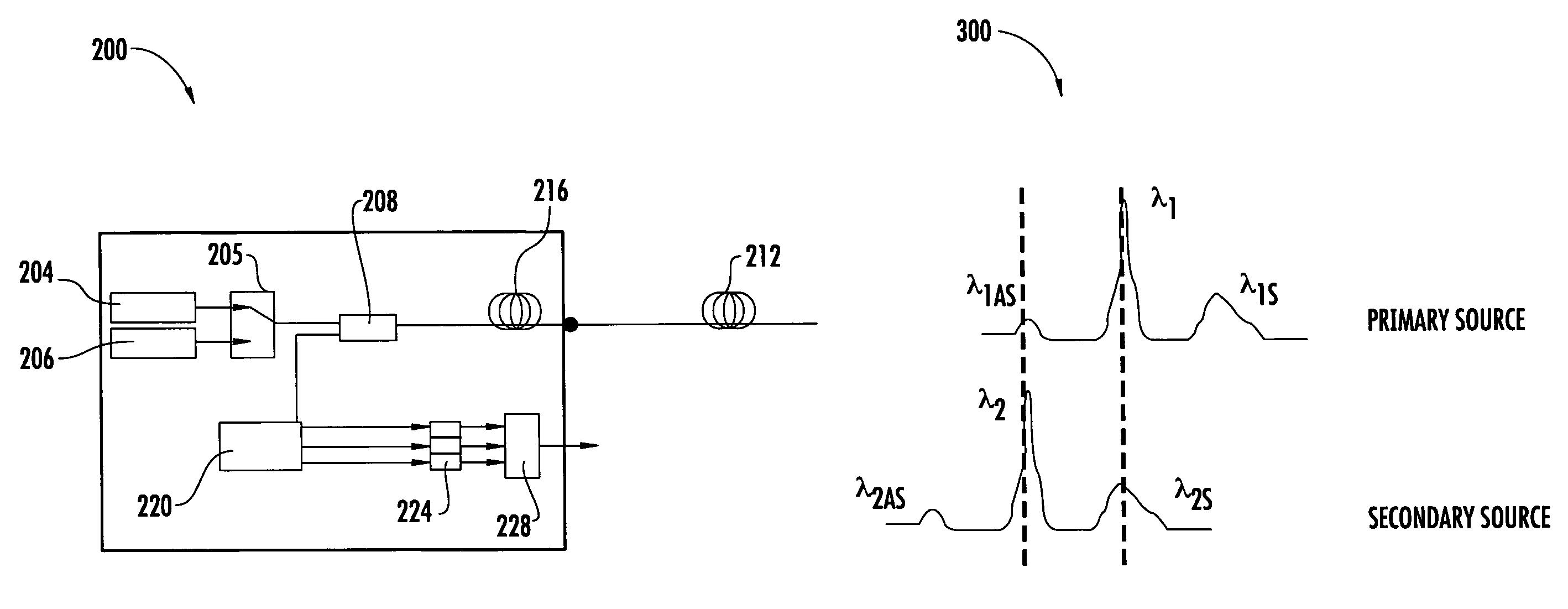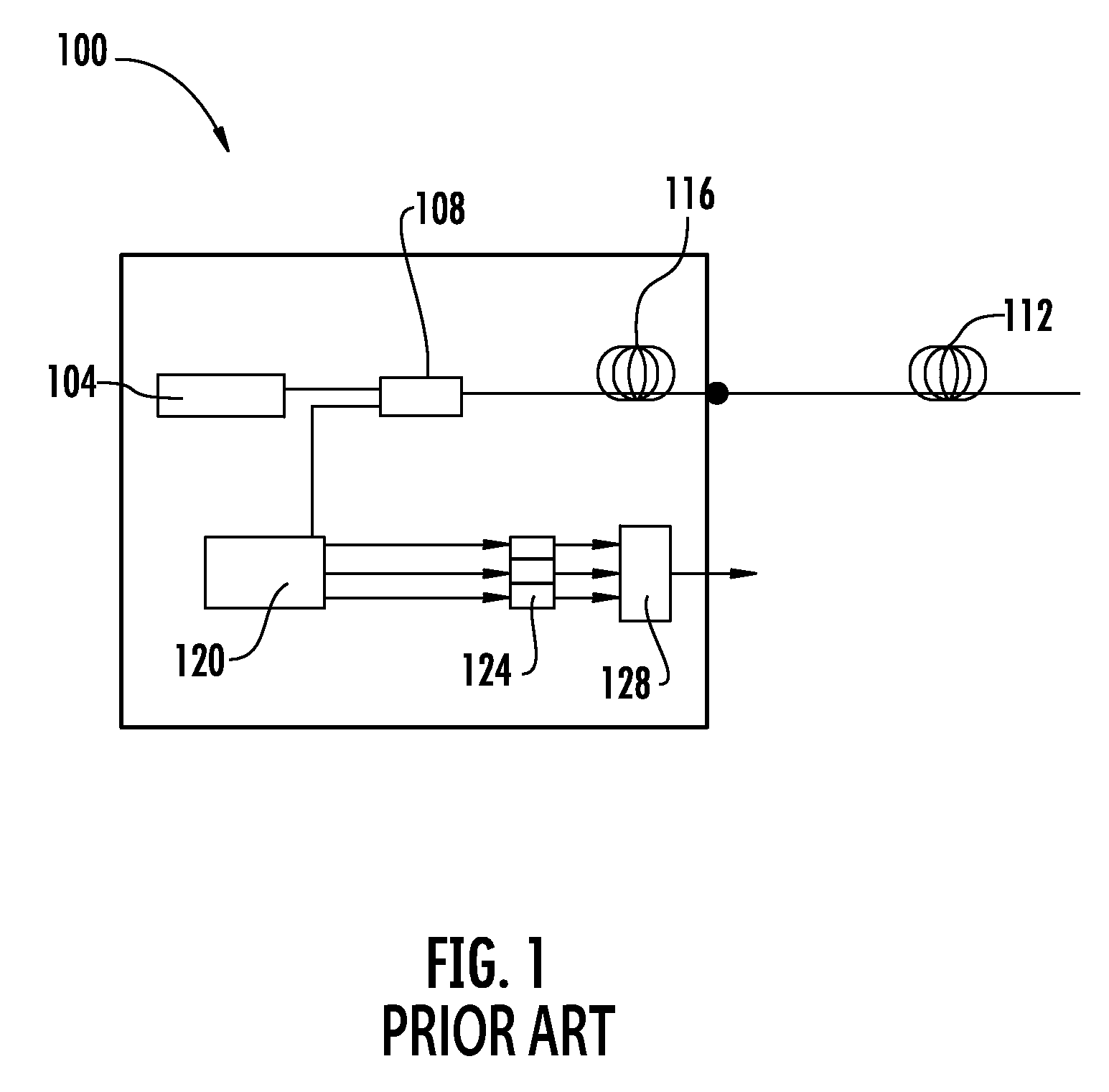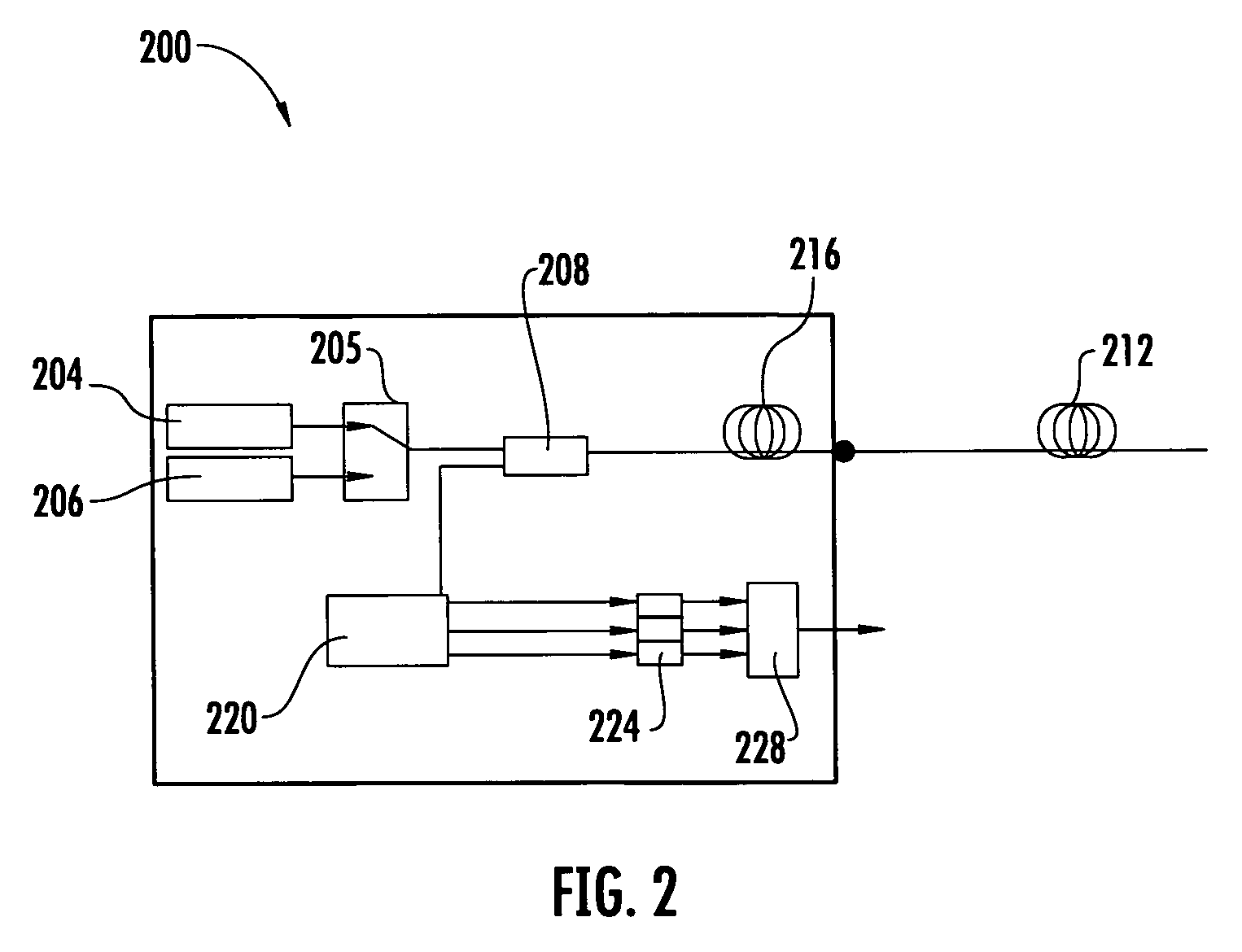Dual source auto-correction in distributed temperature systems
a distributed temperature and self-calibration technology, applied in the field of temperature sensing, can solve the problems of double the length of the effect of double the length of the sensing fiber and the sensing tim
- Summary
- Abstract
- Description
- Claims
- Application Information
AI Technical Summary
Benefits of technology
Problems solved by technology
Method used
Image
Examples
experimental verification
[0051]In an experimental set-up similar to FIG. 2 two laser sources 975 nm (primary) and 940 nm (secondary) were operated in pulse mode and selected alternatively using an optical switch, and the scattered signals collected in sequence by Si APD (Avalanche Photo-Diodes). The anti-Stokes signal is collected with 975 nm laser connection selected, while the Stokes signal is collected with the 940 nm laser selected. Back-scattered spectra of the single source system is shown in FIG. 4. and the proposed dual-source system back-scattered Raman intensities are plotted in FIG. 5. Two solid lines located at 940 nm and 975 nm indicate the Rayleigh bands of the secondary and the primary light sources. And two dotted lines containing the solid lines indicate the anti-Stokes and Stokes bands of the primary and secondary light sources respectively.
[0052]Four different multimode fibers were used for test probes—three fibers in normal condition from different manufacturers, and one fiber that is hy...
PUM
| Property | Measurement | Unit |
|---|---|---|
| wavelength | aaaaa | aaaaa |
| wavelength | aaaaa | aaaaa |
| temperature | aaaaa | aaaaa |
Abstract
Description
Claims
Application Information
 Login to View More
Login to View More - R&D
- Intellectual Property
- Life Sciences
- Materials
- Tech Scout
- Unparalleled Data Quality
- Higher Quality Content
- 60% Fewer Hallucinations
Browse by: Latest US Patents, China's latest patents, Technical Efficacy Thesaurus, Application Domain, Technology Topic, Popular Technical Reports.
© 2025 PatSnap. All rights reserved.Legal|Privacy policy|Modern Slavery Act Transparency Statement|Sitemap|About US| Contact US: help@patsnap.com



